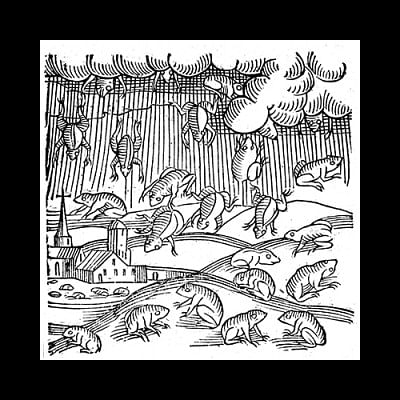The mysteries of rain

Unusual rain is not only found in myths and legends, rather it is more common than one may think.
A mysterious milky white rain poured down in parts of Washington, Oregon, and Idaho in USA earlier this year, coating cars, windows and people.
Precipitation cannot form without some other particles to act as the nucleus to gather molecules of water from the air until they become heavy enough to fall, which suggests that rain water is not completely pure. The milky rain might have taken place owing to one of the wildfire burn scars in the Pacific Northwest, reports Smithsonian.com.
“If a windstorm comes along with the right conditions, you can produce really huge dust and ash plumes from these burn scars,” said Brian Lamb, an air specialist at Washington State University who was among the scientists studying the burn scars.
However, the team failed to trace the milky rain to one of those sites. Scientists eventually found the source, a dust storm that carried particles from the bed of a shallow lake in Southern Oregon with high salinity similar to the composition of the milky rain.
This was just another incident of mysterious rains which have a long history and can be explained scientifically. “Frog and toad rains, fish rains and coloured rains – most often red, yellow or black – are among the most common accounts of strange rain, reported since ancient times,” author Cynthia Barnett noted in her book Rain: A Natural and Cultural History.
“Still more peculiar rains reported over history have included hay, snakes, maggots, seeds, nuts, stones and shredded meat (that last one is suspected to have dropped from a boisterous flock of feeding vultures),” Barnett also wrote.
She also referred to an account of a shower during which golf balls fell in Florida, which potentially linked to a tornado passing across a golf course.
In an anecdote, Greek philosopher Heraclides Lembus during the second century BC wrote: “In Paeonia and Dardania, it has, they say, before now rained frogs; and so great has been the number of these frogs that the houses and the roads have been full of them.”
The village of Yoro in Honduras celebrates the annual Festival de la Lluvia de Peces to commemorate the downpour with small, silvery fish that allegedly takes place at least once a year. Thousands of frogs reportedly fell during a rain in a north-western Serbian town in 2005.
“The frogs, different from those usually seen in the area, survived the fall and hopped around in search of water,” Smithsonian.com quoted a news story.

John Knox, an atmospheric scientist at the University of Georgia, said, “I always find the frogs and the fish to be weird,” adding, “And I’m not sure we total understand that, but it seems that it has to be that somewhere there’s a waterspout or a tornado…something must have gone over a lake, sucked up a bunch of fish” or other material and dropped it somewhere else. How far an object travels depends on shape, weight and wind.”
From his study of tornado debris, he documented printed photographs that travelled around 200 miles and a metal sign that flew around 50 miles. “That sign went up and did the magic carpet ride, landing in the next state,” he said.
Dust, which is mainly the reason behind coloured rains, can travel a lot farther, as it was once found that yellow dust that fell on western Washington in 1998 was originated from the Gobi Desert. Dust from the Sahara Desert can spread thousands of miles away across the Atlantic Ocean!
“If that dust plume interacts with some precipitation, then you’ve got the ingredients where the dust is washed out in rainfall,” said Lamb, adding, “The color of the rain will probably reflect the mineral composition of the source.”
Red rains were produced by the Saharan dust, and dust from the Gobi Desert produces yellow ones. Black rains may result from volcanoes or from pollution. In Europe, dirty, greasy rains resulting from soot from the manufacturing centres in England and Scotland were found to turn sheep black during the 19th century. More recently, black rain and snow fell in India after the burning of oil wells in Kuwait during the Gulf War in 1991.
“People have observed red stains so rich they can stain white clothes pink,” Barnett also wrote in her book. Researchers have found tiny cell-like red particles in the precipitation, but it is yet to be determined what those particles might be.
A yellow rain fell on villages in Laos in 1978 which gave rise to much argument over what actually happened. Scientists suggested that the rain actually contained yellow bee feces resulting from “mass defecation flights” by honeybees.
However, odd a shower of objects or a coloured rain may seem, we fail to realise that they are quite common. Around 60,000 newspaper reports describing falls of everything ranging from frogs and snakes to cinders and salt were collected by Charles Hoy Fort in the early 20th century. There were other incidents of milky rain in the Pacific Northwest prior to the one that happened recently, Lamb noted.
“Here in eastern Washington, we’ve experienced those kinds of rains periodically,” he said.

 For all latest news, follow The Daily Star's Google News channel.
For all latest news, follow The Daily Star's Google News channel. 



Comments